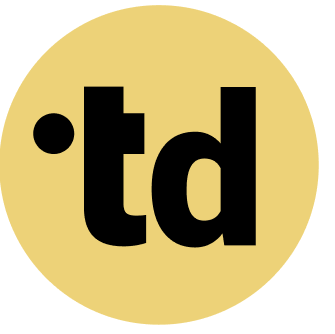Key Takeaways
Accurate workload forecasting is critical to move beyond reactive problem-solving, as 46% of EU workers feel overloaded.
Teams with clear roles are 53% more efficient, directly combating the burnout affecting 22% of European employees.
Integrating AI into hybrid teams, a practice in 72% of EU organizations, requires clear role definition to succeed.
Constant change and rising complexity push teams to their limits. The old ways of managing projects no longer work, leading to burnout and budget overruns that cost companies millions. A stunning 22 percent of European employees report symptoms of burnout, a direct result of unmanaged, chaotic workloads. But what if you could see the future of your team's capacity? By mastering workload forecasting for upcoming projects and sprints, Team Architects can build resilient, high-performing units. This is not about working harder; it's about providing the clarity and structure for your team to win, turning the tide on overload with a smarter, more human-centric approach. See our pricing.
Practical Framework for Team Architects
As a Team Architect, you can apply these principles to your organization:
- Map Current State: Document existing roles and responsibilities using a tool like teamdecoder.
- Identify Gaps: Where are roles unclear? Where do humans and AI agents overlap?
- Define Clear Boundaries: Specify which tasks are handled by humans vs. AI agents.
- Create Accountability: Assign clear decision rights for each role.
- Iterate and Improve: Continuously refine based on team feedback.
The High Cost of Guesswork in Project Planning
Sweet Teams Are Made of This: clarity, not chaos. Yet many projects run on guesswork, leading to massive inefficiencies. Public projects in Germany, for example, run 73 percent over budget on average due to poor planning. This isn't just a public sector issue; IT project failures cost the European Union an estimated €142 billion in a single year.
This financial drain stems from a fundamental misunderstanding of team capacity and workload. When roles are undefined, tasks overlap and deadlines slip, causing a ripple effect of delays and frustration. Only a portion of companies successfully complete a portion of of their projects, a clear sign of systemic planning failure. This reactive cycle burns out your best people and undermines strategic goals. For more insight, explore workload planning and allocation.
The challenge is moving from a culture of constant firefighting to one of proactive preparation and strategic foresight.
Achieving Clarity with Proactive Workload Forecasting
Forecasting workload is the first step to reclaiming control and building stronger teams. It replaces assumptions with data, giving leaders a clear view of upcoming demands. This clarity allows for smarter workload planning, preventing the overload that affects nearly half of all EU workers.
Here are some facts that highlight the need for a new approach:
- Nearly a significant number of workers in the EU are exposed to high time pressure or work overload.
- About 22 percent of all European employees report experiencing symptoms of burnout at work.
- Teams with clearly defined roles and responsibilities are a significant number of more efficient in their work.
- Poor communication is a factor for some employees, compounding workload stress.
These numbers show a direct link between a lack of clarity and poor performance. By forecasting needs, you can address potential bottlenecks before they disrupt a sprint. This proactive stance empowers teams by setting realistic expectations and providing the resources they need to succeed.
With a clear forecast in hand, the next step is to structure your teams for this new, transparent way of working.
Architecting High-Performance Hybrid Teams
It's time to Make Bots and Humans Click. Modern teams are hybrid, blending human talent with AI agents to boost efficiency. Already, many European organizations use AI in at least one HR function, signaling a major shift in team structures. For Team Architects, the goal is to design a system where humans and AI work together seamlessly. You can try teamdecoder for free to start building these structures.
Our Playful Tip: Effective hybrid teams require deliberate design, not just adding new tech. Use these four steps to build a foundation for success:
- Define Roles with Precision: Clarify who does what, for both human and AI team members. This eliminates confusion and ensures accountability from day one.
- Map Key Workflows Visually: Use a platform to chart out how tasks move between team members. This makes handoffs smooth and predictable.
- Integrate AI for Repetitive Tasks: Assign AI agents to handle data analysis or scheduling, freeing up human experts for strategic work.
- Create a Single Source of Truth: A central platform for viewing roles and responsibilities prevents silos and keeps Many people aligned. Explore some tools for dynamic resource allocation.
The German market for workload automation reached USD the vast majority of in 2023, showing a clear trend toward system-driven clarity. By architecting your teams this way, you create a resilient structure that can handle any project.
This clear architecture is the key to turning your strategic forecasts into tangible, successful outcomes.
From Strategy to Reality: Operationalizing Your Forecasts
With clear roles and accurate forecasts, Teams Just Wanna Have Fun- or at least, work without the friction of chaos. Operationalizing your workload plans means turning data into daily practice. In Germany, many companies using agile methods report improved collaboration among teams, a direct result of better planning.
This is where a dedicated platform for strategic planning becomes essential. It connects your high-level strategy to the tasks inside each sprint. Europe's employee engagement rate is the lowest in the world at just a significant portion, often due to a disconnect between work and purpose. A clear system shows team members how their work contributes to the bigger picture, boosting both morale and productivity.
By embedding your forecasts into a dynamic tool, you create a system that adapts to change. This approach helps you manage your resource needs with analysis tools and ensures your team's efforts are Often aligned with strategic priorities.
Try teamdecoder for free - shape your team and make change feel like play!
More Links
GPM / IPMA describes how the world of work is changing in project management, focusing on flexible careers and borderless projects.
GPM / IPMA provides the results of a 2017 study on salary and career trends within project management.
Federal Statistical Office of Germany (Destatis) discusses the elimination of project management as part of bureaucracy reduction and modernization efforts.
Porsche Consulting offers insights into data-driven strategic workforce management.
FAQ
What are the first steps to implementing workload forecasting?
Start by defining roles and responsibilities within your team. Then, track the time required for common tasks to create a baseline. Use a simple tool or platform to visualize upcoming projects and map them against your team's available capacity.
How often should we forecast our team's workload?
For agile teams, workload forecasting should be a continuous activity reviewed before each new sprint or project phase. For long-term projects, a higher-level forecast should be reviewed quarterly to align with strategic business goals.
What is the difference between workload management and forecasting?
Workload forecasting is the process of predicting future work demands and the resources required to meet them. Workload management is the broader process of distributing and managing that work among the team to ensure efficiency and prevent overload.
Our projects are Often changing. How can we forecast in such a dynamic environment?
In a dynamic environment, focus on forecasting for the short term (e.g., the next two to four weeks) with high detail, while keeping long-term forecasts more flexible. Use a tool that allows for easy adjustments and prioritizes clear communication about changes.





